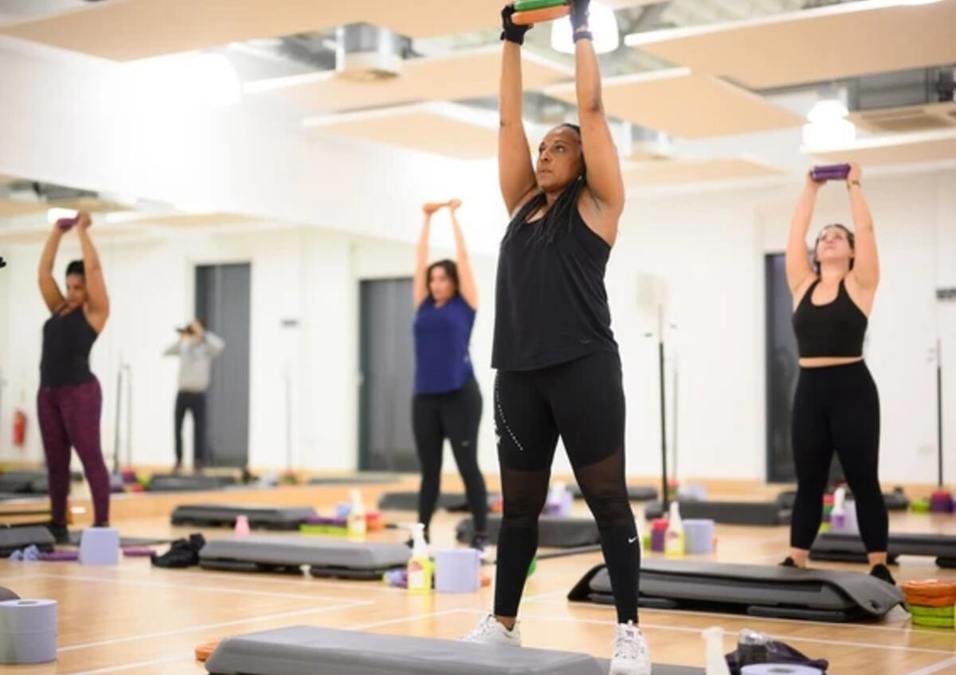10-20-30 Workout Matches Longer Sessions

SIGN UP FOR YOUR FREE DAY PASS TODAY!
If your ideal workout is both brief and effective, consider trying the 10-20-30 routine.
This form of interval training involves 30 seconds at an easy pace, 20 seconds at a moderate pace, and 10 seconds at maximum intensity.
You repeat each minute-long cycle five times and do each five-minute sequence two to four times, taking a one to four-minute rest between each block.
The total workout time ranges from 10 to 20 minutes, depending on how many times you repeat the five-minute sequence.
What results can you expect from spending 20 minutes shifting through three different exercise intensities?
According to a review in the European Journal of Sports Science, the 10-20-30 workout not only matches most steady-state workouts' health and fitness benefits, but it does so in less time.
"The 10-20-30 training is a new training modality, which has greater benefits than aerobic moderate-intensity training and is a more time-efficient way to improve performance and health even in trained people," said the review authors from the Department of Nutrition, Exercise and Sports at the University of Copenhagen.
How does a 20-minute workout deliver the same impact as one that is two or three times longer? The secret likely lies in the repeated bouts of high-intensity exercise.
Pushing your body to its limits, even for a few seconds, increases your heart rate to a level rarely reached during steady-state workouts.
How intensely do you need to work? One of the first studies on the 10-20-30 workout involved runners who elevated their heart rates to 90% of their maximum during the 10-second sprints.
This translates to 50 seconds at peak intensity in each five-minute block. However, in practice, the heart rate remains elevated as the exerciser transitions to the easy interval, resulting in the heart working at a high level for about two minutes of each five-minute section.
This effort is sufficient to provide the health and fitness benefits of a moderate-intensity workout in half the time.
In the original study, 12 male and six female runners aged 22-44, who ran approximately 30 kilometers a week, replaced their usual routine with the 10-20-30 workout three times a week.
They started with three five-minute blocks for the first four weeks, adding another five-minute block for the final four weeks.
After eight weeks, the runners improved their aerobic fitness (VO2 max) by 4%, despite halving their training distance (13 km during the initial weeks and 16 km in the latter weeks).
Similar improvements were noted in older runners (average age of 49) and in cyclists, who increased their VO2 max by 8% and performance by 17% after six weeks of 10-20-30 workouts.
It's not just athletic performance that saw enhancement. Some studies recorded reductions in blood pressure and body fat and an increase in muscle mass.
These benefits were not exclusive to healthy individuals. Participants with Type 2 diabetes, hypertension, and asthma also experienced health and fitness improvements from the 10-20-30 workouts.
If this seems too good to be true, remember that achieving the reported results requires spending 10 seconds of every minute at peak effort.
In most studies, participants reached 90% of their maximum heart rate (220 beats per minute minus age) during these intense bursts.
Some data suggests similar results at 80% of the maximum heart rate, but you still need to give it your all during the 10-second sprints to make the 10-20-30 workout effective.
If the intensity level feels daunting, note that adherence among study subjects was high, with about 80% sticking with the program.
Impressively, many participants were considered "untrained." Just ensure your easy pace is genuinely easy, and your moderate intensity is manageable.
Downloading an interval app that chimes at the end of each intensity bout can help you focus without constantly checking your phone.
If you're unsure about completing four five-minute blocks, start with two and gradually work up to four. Avoid assuming that if four blocks are beneficial, five or six will yield even better results.
Increased fatigue may prevent you from achieving peak intensity, reducing the workout's effectiveness and nullifying your extra effort. One of interval training's best features is its efficiency, delivering significant results in less time—a compelling reason to try the 10-20-30 workout.
This isn't to suggest that all traditional steady-state workouts should be replaced by interval training.
However, incorporating a couple of 10-20-30 workouts into your routine can add variety and a noticeable boost in fitness and performance. A worthwhile return for just a 20-minute effort.
Source: montrealgazette
The opinions shared in the GymNation blog articles are solely those of the respective authors and may not represent the perspectives of GymNation or any member of the GymNation team.
GET YOUR FREE TRIAL TODAY














































































